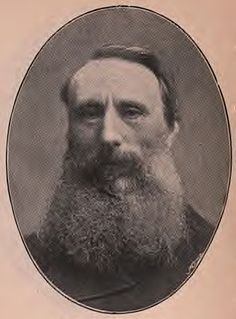Related Research Articles

Anthony John Mundella PC, known as A. J. Mundella, was a pioneering and innovative English manufacturer and later a Liberal Party MP and Cabinet Minister who sat in the House of Commons of the United Kingdom from 1868 to 1897. He served under William Ewart Gladstone as Education minister from 1880 to 1885 and as President of the Board of Trade in 1886 and from 1892 to 1894. As Education minister he established universal compulsory education in Britain and played the major part in building the state education system. At the Board of Trade he was instrumental in the reduction of working hours and the raising of minimum ages in the employment of children and young people. He was among the first to prove the effectiveness of arbitration and conciliation in industrial relations. He also brought in the first laws to prevent cruelty to children. His political achievements in the late Victorian age are said to have anticipated 20th century society.

Knitting is the process of using two or more needles to loop yarn into a series of interconnected loops in order to create a finished garment or some other type of fabric. The word is derived from knot, thought to originate from the Dutch verb knutten, which is similar to the Old English cnyttan, “to knot”. Its origins lie in the basic human need for clothing for protection against the elements. More recently, hand knitting has become less a necessary skill and more a hobby.

A stocking frame was a mechanical knitting machine used in the textiles industry. It was invented by William Lee of Calverton near Nottingham in 1589. Its use, known traditionally as framework knitting, was the first major stage in the mechanisation of the textile industry, and played an important part in the early history of the Industrial Revolution. It was adapted to knit cotton and to do ribbing, and by 1800 had been adapted as a lace making machine.
Community is a UK trade union which formed in 2004. The union represents workers in a diverse range of sectors, including iron and steel, domestic appliance manufacturing, clothing, textiles, footwear, road transport, betting and gaming and call centres, as well as workers in voluntary organisations, workshops for visually impaired and disabled people, community-care providers and housing associations. Although the former trade unions which amalgamated to form Community were all craft unions or industrial unions, Community is now a general union. Community has merged or transferred engagements with a number of smaller unions, some of which have become sections within Community. These include the National League of the Blind and Disabled (NLBD), the National Union of Domestic Appliance and General Operatives (NUDAGO), the National Union of Knitwear, Footwear & Apparel Trades (KFAT), the British Union of Social Work Employees (BUSWE), the Prison Service Union and the UFS.

The General Federation of Trade Unions (GFTU) is a national trade union centre in the United Kingdom. It has 35 affiliates with a membership of just over 214,000 and describes itself as the "federation for specialist unions".
The National Union of the Footwear, Leather and Allied Trades (NUFLAT) was a trade union in the United Kingdom which existed between 1971 and 1991. It represented workers in the leather and footwear industry.

The National Union of Hosiery and Knitwear Workers (NUHKW) was a trade union in the United Kingdom.
John Gravener Henson, was a workers' leader from Nottingham, England, and a historian of the framework knitters. E. P. Thompson saw him as one of three outstanding figures in the early English working-class movement.
The Amalgamated Society of Operative Lace Makers and Auxiliary Workers, also known as the Lace Makers' Society, was a trade union representing laceworkers in England.
David Arthur Charles Lambert is a retired British textile and garment workers' trade union leader.
Horace Matthew Moulden-Colton was a British trade union leader.
George Edmund Dearing was a British trade union leader.
Helen Frances McGrath was a Scottish trade unionist.
The Leicester and Leicestershire Amalgamated Hosiery Union was a trade union representing machine knitters in Leicestershire.
Clifford Groocock Groocock was a British trade union leader.
The Notts Trades Council, formally known as the Nottinghamshire Nottingham and Mansfield Trades Council, brings together trade unionists in Nottinghamshire, in England.
The Hinckley and District Hosiery Union was a trade union representing workers involved in making hosiery in the Hinckley area of Leicestershire, in England.
The Ilkeston and District Hosiery Union was a trade union representing people involved in making hosiery in northern Nottinghamshire and eastern Derbyshire, in England.
John James Charlesworth was a British trade union leader.
The Nottingham Hosiery Finishers' Association (NHFA) was a trade union representing workers involved in trimming and putting together hosiery in the Nottingham area of England.
References
- 1 2 Marsh, Arthur; Ryan, Victoria; Smethurst, John B. (1994). Historical Directory of Trade Unions. 4. Farnham: Ashgate. pp. 382–383. ISBN 9780859679008.
- ↑ Richard, Gurnham (1976). A History of the Trade Union movement in the Hosiery and Knitwear Industry. Leicester: National Union of Hosiery and Knitwear Workers.
- 1 2 Richard Stevens, "Charlesworth, John James", Dictionary of Labour Biography, vol.X, pp.42–47